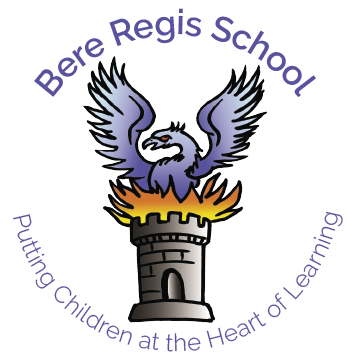
Assessment & results
Statutory Assessment and Results
Early Years Foundation Stage (EYFS) Statutory Profile
The EYFS Profile is a statutory assessment of children’s development at the end of the academic year (June) in which children turn 5, usually reception year. Each child’s level of development is assessed against 17 early learning goals (ELGs) across all 7 areas of learning in the EYFS curriculum. For each ELG, your child’s teacher must assess whether a child is meeting the level of development expected at the end of the EYFS, or if they are emerging in this area. The Profile is intended to provide an assessment of each child’s development at the end of the EYFS in order to support children’s successful transitions to year 1. The EYFS Profile will be shared with parents, within the children’s end of year reports.
Year 1- Phonics Check
In June of Year 1, children will take the Phonics Screening Check. The phonics screening check contains 40 words divided into two sections of 20 words. Both sections contain a mixture of real words and pseudo-words (alien words). Pseduo-words are words that are phonically decodable but are not actual words with an associated meaning. They are included in the check specifically to assess whether your child can decode a word using their phonics skills. All pseudo-words in the check are accompanied by a picture of an imaginary creature. This is to ensure that they are not trying to match the pseudoword to a word in their vocabulary.
The check is designed to give teachers information on how your child is progressing in phonics. It will help to identify whether your child needs additional support at this stage so that they do not fall behind in this vital early reading skill. The results of the phonic check will be shared with parents, within the children’s end of year reports.
Year 2 -End of Key Stage One assessments
In the summer term, teachers are required to provide an end of key stage one teacher assessment for all Year 2 pupils for Reading, Writing and Mathematics to the DfE (Department for Education). Teacher assessments are also used to build up a picture of your child’s learning and achievements over time. End of key stage one teacher assessments will be shared with parents, within the children’s end of year reports.
In order to make this end of key stage assessment, teachers will look at children’s ongoing class work and achievements during the school year as well as results from written assessments. Children will also complete Standardised Assessment Tests (SATs), which are written papers in Maths and Reading. The tasks are undertaken in the classroom during normal lesson times, are marked by their class teacher and are kept very low key.
For writing, teachers will look at the children’s independent written work over the school year, looking for particular features and skills that are evident within the pieces.
Year 4 – Multiplication check
In June, Year 4 pupils are required to complete the Multiplication tables check. The purpose of the check is to determine whether your child can fluently recall their times tables up to 12 x 12, which is essential for future success in mathematics. It will also help us to identify if your child may need additional support, in learning them.
The test is an on-screen check consisting of 25 times table questions. Your child will be able to answer 3 practice questions before taking the actual check. They will then have 6 seconds to answer each question. On average, the check should take no longer than 5 minutes to complete.
The results of the multiplication check will be shared with parents, within the children’s end of year reports.
Year 6 – End of Key Stage Two Assessments
In the summer term, teachers are required to provide an end of key stage two teacher assessment for all Year 6 pupils for Reading, Writing, SPAG, Science and Mathematics to the DfE (Department for Education).
In May, children in Year 6 will take SATs written papers in English, SPAG (spelling, punctuation and grammar) and Maths. These tests will be both set and marked externally, and the results will be used to measure the school’s performance (for example, through reporting to Ofsted and published league tables). Your child’s marks will be used in conjunction with teacher assessment to give a broader picture of their attainment.
The reading test will be a single paper with questions based on three passages of text. Your child will have one hour, including reading time, to complete the test.
The SPAG will consist of two parts: a grammar and punctuation paper requiring short answers, lasting 45 minutes, and an aural spelling test of 20 words, lasting around 15 minutes.
Children will sit three papers in maths: Paper 1: arithmetic, Papers 2 and 3: reasoning.
In school, we will be working towards the SATs throughout the year, preparing them with practice papers, booster classes and by providing them with revision books.
During the week of SATs, children will be invited into school earlier than usual, to share a healthy SATs breakfast with their friends. We find this is a good way of settling the children in before the start of the tests.
Top Tips to help prepare your children for SATs
- Help them revise: Use the revision booklets, provided by school, to help them revise for the tests.
- Schedule time: Help your child revise by rearranging your family’s schedules and usual priorities around their work.
- Relax about chores: Be more lenient with their untidiness and jobs around the house.
- Be patient: Try to be understanding and tolerant of their moods and lost tempers.
- Stay positive: Don’t nag, blame or criticise them about their revision. Try to talk to them in a relaxed and constructive way, helping them to plan their time or to get the help they need.
- Create the right environment: Make sure the house is conducive to studying. Younger siblings need to understand that they mustn’t interrupt study and the TV and music shouldn’t be too loud. But also accept that some children actually study better with background music or noise.
- Plan treats: Suggest a family treat at the end of the tests to give your child something to look forward to. Let them choose what they would like.
- Offer encouragement: Be calm, positive, encouraging, kind and compassionate. Let your child know that you love them, respect their efforts, and will be there to support them regardless of their results.
- Make time for fun: Remember to still have a laugh together. A smile is a curve that puts a lot of things straight!












